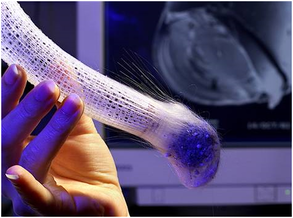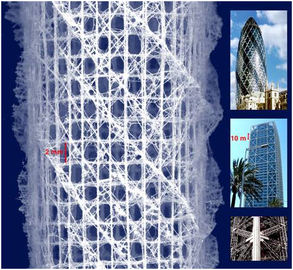Glass-ECO
“Love the material” Kevin McCloud
Ever thought if glass has any other use apart from its magical translucency?
Since 2008 the company called Glasseco has managed to turn waste glass into worktops. The glass worktops, which have been described as pieces of art, allow you to express your own individual style whilst caring for the planet at the same time. Proving high-end design and green living are compatible.
Glass-ECO is made from 95% recycled glass bottles and recycled plastics which would have gone to landfill sites, so as well as looking great in your home it's also great for the environment too.
Glass-ECO worktops can be supplied with an urban matt finish, like concrete, or it can be highly polished as smooth as the finest marble, quartz or granite for dazzling counter tops in kitchens, bathrooms, style bars, restaurants, pubs, receptions, shops, inside or out, anywhere you like!
· GLASSeco is made from up to 95% recycled materials.
· hygienic and easy to clean and maintain.
· create personalised glass worktops using your own specific blend of glasses.
· glass worktops that have a very hard scratch resistant polished surface.
· Class A rated for high impact resistance.
· stunning good looks and eco friendly too.
“Love the material” Kevin McCloud
Ever thought if glass has any other use apart from its magical translucency?
Since 2008 the company called Glasseco has managed to turn waste glass into worktops. The glass worktops, which have been described as pieces of art, allow you to express your own individual style whilst caring for the planet at the same time. Proving high-end design and green living are compatible.
Glass-ECO is made from 95% recycled glass bottles and recycled plastics which would have gone to landfill sites, so as well as looking great in your home it's also great for the environment too.
Glass-ECO worktops can be supplied with an urban matt finish, like concrete, or it can be highly polished as smooth as the finest marble, quartz or granite for dazzling counter tops in kitchens, bathrooms, style bars, restaurants, pubs, receptions, shops, inside or out, anywhere you like!
· GLASSeco is made from up to 95% recycled materials.
· hygienic and easy to clean and maintain.
· create personalised glass worktops using your own specific blend of glasses.
· glass worktops that have a very hard scratch resistant polished surface.
· Class A rated for high impact resistance.
· stunning good looks and eco friendly too.
Glass > Concrete
Glass has many uses, especially for the use of the building material such as concrete.
Glass bottles à industry at Isle of Man à bottles washed à machinery used for crunching à plastic and metal divided à glass crushed again and used for sand.
Now, you can think twice before you through a bottle away.
Glass has many uses, especially for the use of the building material such as concrete.
Glass bottles à industry at Isle of Man à bottles washed à machinery used for crunching à plastic and metal divided à glass crushed again and used for sand.
Now, you can think twice before you through a bottle away.
Manufacturing Glass
One of the best materials ever created is Glass. This dazzling material allows architects to create mind blowing structures entirely from glass. The new apple store in new York is made entirely for glass, even the structure beams are glass blocks. The video below is from Channel 5, “How Do They Do It” which shows how paper is recycled, how Themes Barrier works and also how glass is manufactured.
One of the best materials ever created is Glass. This dazzling material allows architects to create mind blowing structures entirely from glass. The new apple store in new York is made entirely for glass, even the structure beams are glass blocks. The video below is from Channel 5, “How Do They Do It” which shows how paper is recycled, how Themes Barrier works and also how glass is manufactured.
Glass & Nature
Architecture should always have leaps between architectural studies and biological findings. Nature is perfect and imperfect and so is architecture. By using natures method of creation, human kind will result into finding materials that economically friendly as well as durable just as the cotton plant which provides us cotton for our jeans and other materials.
Architecture should always have leaps between architectural studies and biological findings. Nature is perfect and imperfect and so is architecture. By using natures method of creation, human kind will result into finding materials that economically friendly as well as durable just as the cotton plant which provides us cotton for our jeans and other materials.
ABOUT THE GLASS SPONGE: Unlike the squishy, manmade sponges we see all the time in our daily lives, sponges are an ancient group of animals whose presence in the fossil record goes back more than half a billion years. Sponges may be groups of collaborating individual cells rather than one unified animal, since they don't form tissues. This means they don't have hearts, lungs or other organs. But they are capable of creating some of the most complex and diverse systems of skeletons known in nature.
The glass sponge is made entirely of glass, spun into delicate fibers. It can even emit light despite the darkness of deep sea levels, thanks to the presence of fluorescent bacteria embedded in its structure. The intricate glass cages of the sponge have at least seven levels of structural organization. The creatures use fiber-reinforced cements, beams of bundled fibers, and diagonal reinforcement beams running at 45-degree angles to achieve maximum strength and stability. The glass beams, which resemble small needles, are made of alternating layers of glass and glue; the glue between each glass layer prevents cracks from spreading from one layer to the next. Wherever the beams intersect, more glue is added to toughen the connection.
WHAT WE COULD LEARN: By studying the glass sponge, scientists could learn how to create a strong material out of something that seems to be frail. It may also hold the secret to making glass at room temperature, instead of the extremely high temperatures required to do so today. Researchers believe that the individual glass fibers in the sponge are formed by a protein at the center of each glass filament.
The glass sponge is made entirely of glass, spun into delicate fibers. It can even emit light despite the darkness of deep sea levels, thanks to the presence of fluorescent bacteria embedded in its structure. The intricate glass cages of the sponge have at least seven levels of structural organization. The creatures use fiber-reinforced cements, beams of bundled fibers, and diagonal reinforcement beams running at 45-degree angles to achieve maximum strength and stability. The glass beams, which resemble small needles, are made of alternating layers of glass and glue; the glue between each glass layer prevents cracks from spreading from one layer to the next. Wherever the beams intersect, more glue is added to toughen the connection.
WHAT WE COULD LEARN: By studying the glass sponge, scientists could learn how to create a strong material out of something that seems to be frail. It may also hold the secret to making glass at room temperature, instead of the extremely high temperatures required to do so today. Researchers believe that the individual glass fibers in the sponge are formed by a protein at the center of each glass filament.
The design of Venus' Flower Basket contains major construction strategies that are used in civil and mechanical engineering, but at the 1,000 times smaller scale. In this image, its structure is compared with the Swiss Tower in London, Hotel De Las Artes in Barcelona and a structural detail of the Eiffel Tower in Paris.


